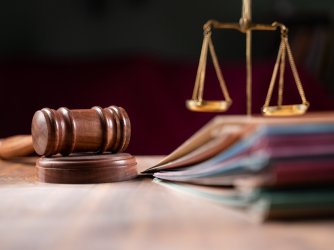Table of Contents
10 Things ‘The New Yorker’ Gets Wrong About Free Speech (Part 1)
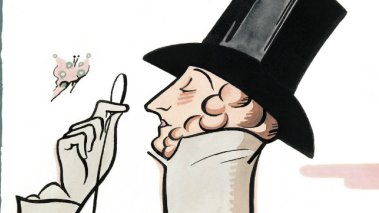
The August 10, 2015 issue of The New Yorker contains an article by Kelefa Sanneh, “The Hell You Say,” that purports to examine “the current free-speech debate.” Unfortunately, the article contains a number of incorrect assertions and flawed arguments—we’ve identified 10—that require response. Today, we’ll start with the first five.
1. “In the years since, restrictive campus speech codes have been widely repealed, which is why modern free-speech advocates are often left to battle less draconian forms of censorship, like cancelled commencement addresses.”
On this point, Sanneh is simply misinformed. He may be thinking about the fact that since the late 1980s, numerous restrictive speech codes have been struck down as unconstitutional by federal courts across the country. But this virtually unbroken string of courtroom defeats (more than a dozen universities have seen their speech codes ruled unconstitutional in court, while nearly three dozen either have seen their policies struck down in court or have had to settle lawsuits) has not changed the fact that a majority of the nation’s top institutions of higher education continue to maintain speech codes. FIRE conducts extensive research on speech codes every year and we publish an annual report condensing that research into a picture of the state of free speech on campuses nationwide. According to our most recent report, released in December 2014, more than 55 percent of the 437 colleges and universities analyzed maintain speech codes that seriously infringe upon the free speech rights of students.
Worse still, a new generation of restrictive speech codes is being installed nationwide in the wake of the federal government’s unprecedented intrusion into colleges’ handling of claims of sexual harassment and sexual assault. Faced with the threat of federal investigation and possibly even a loss of federal funds, many colleges are adopting a restrictive definition of sexual harassment put forth by the Department of Education’s Office for Civil Rights in a document billed as a “blueprint for colleges and universities throughout the country.” So while FIRE is indeed concerned with other forms of censorship (such as the very real censorship that occurs when universities disinvite commencement speakers to avoid discomfort and discontent among their students), we also continue to fight vigorously against campus speech codes.
2. “But then the current free-speech debate is rather paradoxical, too—it can be hard to tell the speakers from the censors.”
A quick pass through FIRE’s vast database of campus censorship cases—or even a quick Internet search—proves this assertion flatly wrong: Censors are easy to identify. They’re not simply decrying speech they dislike, but are actively and openly punishing students for it. They’re also making headlines in the process. Two high-profile FIRE cases that made national news in the past month demonstrate the conspicuousness of the campus censor:
In 2007, Valdosta State University (VSU) student Hayden Barnes posted a collage on his personal Facebook page protesting the planned construction of campus parking garages. Angered by Barnes’ activism against his pet project, VSU’s then-president Ronald Zaccari claimed the picture constituted a threat on his life and had Barnes expelled without a hearing. With help from FIRE, Barnes sued and, after an 8-year legal battle, received a $900,000 settlement late last month. Details of the case opened FIRE President and CEO Greg Lukianoff’s 2014 book Unlearning Liberty: Campus Censorship and the End of American Debate, and news of last month’s settlement was covered in numerous publications, including the Atlanta Journal-Constitution and The Chronicle of Higher Education.
Another recent example comes from California State Polytechnic University, Pomona where, in February, campus police told student activist Nicolas Tomas he could hand out fliers only with a “free speech badge,” in a free speech zone, on a free speech day. The story was covered in-depth by the Los Angeles Times. Cal Poly Pomona was unquestionably the censor here, like many campuses whose illegal speech restrictions are publicly available and codified as campus policies. With FIRE’s help, Tomas filed suit against the school in March. As part of FIRE-led negotiations in response to the suit, Cal Poly Pomona agreed to revise its policies and pay Tomas $35,000 in damages and fees.
If Sanneh had looked for instances of censorship, he would have quickly found these two clear examples from the last month alone—and many more.
3. “For many modern free-speech advocates, the First Amendment is irrelevant: their main target is not repressive laws but shifting norms and values.”
Sanneh spills a significant amount of ink discussing arguments advanced by critics of American notions of freedom of expression—most prominently, Cass Sunstein, Jeremy Waldron, and Stanley Fish. Unfortunately, Sanneh does not pay equivalent attention to the arguments of the “modern free-speech advocates” he breezily characterizes as indifferent to the First Amendment. Beyond Kirsten Powers, Mary Katharine Ham, and Guy Benson, authors of the two recent books that serve as starting points for his observations, Sanneh declines to cite or engage those of us who have dedicated our professional lives to defending freedom of expression. This omission may explain why Sanneh dismisses the First Amendment’s vitality and importance.
If the First Amendment is irrelevant, nobody told us here at FIRE. It’s the cornerstone of our work. Without the First Amendment, we couldn’t successfully defend students like Merritt Burch and Anthony Vizzone of the University of Hawaii at Hilo, forbidden by administrators to protest National Security Agency spying outside of a minuscule, remote “free speech zone.” Likewise, without the First Amendment, we’d be hard-pressed to mount a winning legal argument on behalf of faculty members at the University of Wisconsin facing proposed legislation banning them from speaking to a nonprofit journalism organization. Indeed, the vast majority of FIRE’s victories would be rendered impossible.
FIRE is far from the only “modern free-speech advocate” whose daily work relies on the legal and moral power of the First Amendment. If Sanneh had looked, he would have quickly discovered the achievements of organizations like the American Civil Liberties Union of Pennsylvania, which utilized the First Amendment to score an important free speech victory for public grade school students who had been suspended for wearing message bracelets on Breast Cancer Awareness Day. Or the Electronic Frontier Foundation, which nearly 20 years ago successfully argued in federal court that computer code is speech protected by the First Amendment, and has used that landmark decision to bolster speech protections online ever since. Or the Student Press Law Center, fighting for the rights of student journalists like Sam Bearzi of the Washington Square News (New York University), who was arrested for taking pictures at a rally protesting the death of Freddie Gray. Or the Institute for Justice, protecting citizens from burdensome government restrictions on speech in a wide variety of contexts; or the Comic Book Legal Defense Fund, guarding artistic freedom for graphic novelists and comic book artists; or the Center for Constitutional Rights, working to vindicate the expressive rights of Professor Steven Salaita and many others.
Like FIRE, each of these groups depends on the First Amendment to guide and support their work. (How could the First Amendment Lawyers Association, as stalwart a collection of free speech advocates as one could imagine, function without the First Amendment?) Of course, that’s a very limited sampling. A complete list would stretch on far longer—especially one that also included individual advocates like Nadine Strossen, Eugene Volokh, Glenn Greenwald, Trevor Timm, Catherine Crump, and Mary Beth Tinker. And organizations that operate outside of the civil liberties context rely on the First Amendment, too. For example, just last week, the Animal Legal Defense Fund won a courtroom victory in convincing a federal judge to strike down Idaho’s so-called “ag-gag” law prohibiting the secret recording of farm operations on First Amendment grounds.
Simply put, it’s flatly inaccurate to conclude that the First Amendment is irrelevant to today’s free speech advocates—and, if he’d asked, today’s free speech advocates would have been the first to tell Sanneh as much.
4. “There is no advocacy group or high-profile politician avowedly devoted to the cause of cracking down on political speech, no national spokesperson for the war on camels.”
FIRE’s work defending freedom of expression and academic freedom on campus would be easier if this were true. Unfortunately, Sanneh is incorrect. Plenty of advocacy groups and politicians are committed to silencing political speech—specifically, political speech voiced by their opponents.
On a national stage, the Department of Education’s Office for Civil Rights (OCR) has pushed a deeply troubling definition of sexual harassment (“any unwelcome conduct of a sexual nature,” including “verbal conduct”) that effectively prohibits subjectively offensive discussion of gender or sexual politics. As FIRE has pointed out, broad definitions of harassment are inevitably used to silence dissenting or unpopular core political speech. And by labeling this broad definition as a “blueprint” for college policies nationwide, OCR has encouraged its widespread adoption. Fearful of federal investigation, colleges are complying, all but tripping over themselves to silence sex- or gender-related speech that might offend someone.
OCR’s encouragement of censorship of campus political speech has taken even more explicit forms. For example, as part of the agreement that ended a year-long federal investigation of the University of Montana’s policies and practices regarding sexual assault and harassment, OCR gained final authority to approve the university’s revised discrimination policies. Incredibly, the policy that finally earned OCR’s stamp of approval defined discrimination as “treat[ing an] individual differently” on the basis of any one of 17 different characteristics—including an individual’s “political ideas.” This impractically broad definition empowers administrators to investigate and punish a vast swath of core protected speech, such as criticizing your classmate’s political convictions or satirizing the views of your political opponents.
Sanneh also could have found ready examples in the contentious skirmishes surrounding the Israel-Palestine conflict on campus. Both sides of the dispute have taken steps to silence opponents. Take the advisory council convened by former University of California System President Mark Yudof to study the climate for Jewish students on campus, which recommended that the UC system “push its current harassment and nondiscrimination provisions further” and “seek opportunities to prohibit hate speech on campus”—brazenly advising Yudof to “accept the challenge” of the inevitable First Amendment defeat that would result. On the other side, academic organizations like the American Studies Association have passed resolutions boycotting Israeli institutions, denying scholars representing Israeli colleges and universities the possibility of formal discussion with ASA members. Making a bad situation for freedom of speech and academic freedom worse, state legislatures like the New York State Senate rushed in to the dispute, passing resolutions that would deny funding to groups supporting a boycott—thereby punishing individual faculty members for the political resolutions made by membership organizations. Advocacy groups, academic associations, politicians—when it comes to attempts to “crack down on political speech,” campus Israel-Palestine disputes have it all.
On a very superficial level, Sanneh is right. There’s no organization named Americans for Political Censorship, and politicians generally obscure or reframe their efforts to censor their opponents. But a cursory review of the campus censorship FIRE confronts semester after semester would have revealed that organizations, politicians, and even federal agencies routinely support the silencing of dissenting, unwanted, or simply inconvenient speech.
5. “So the authors [Kirsten Powers, Mary Katharine Ham, and Guy Benson] are forced to argue with evanescent Facebook groups or obscure junior faculty members or young people who had the misfortune to be quoted in the college newspaper.”
There is no shortage of state actors—public university administrators, for example—who are engaging in straightforwardly unconstitutional censorship. In recent years, even state legislatures have attempted to limit expression or investigate speakers for their protected speech. But in addition to speaking out against obviously powerful people, FIRE and other free speech advocates respond to people whom the public may not recognize as powerful because those individuals often wield significant influence over administrators, spurring censorship and punishment for protected speech that they couldn’t impose by themselves.
The University of Alaska Fairbanks’ student newspaper was under investigation for nearly a year after a professor filed multiple complaints arguing that a satirical article and a factual account of UAF’s Facebook “Confessions” page constituted sexual harassment, despite the professor apparently being alone in her concerns. Similarly, earlier this summer, Northwestern University took months to clear Professor Laura Kipnis after two students filed sexual harassment complaints based on an essay she published in The Chronicle of Higher Education. Recently FIRE wrote about the baffling case of Texas Christian University suspending a student for a social media post based on a complaint from someone who didn’t even attend the university. The student’s language fell far short of what would be unprotected by the First Amendment, and TCU promises its community free expression. Despite this, TCU partially rescinded the punishment only after national media attention and a letter from FIRE. In June, Crafton Hills College in California quickly moved to comply with a student’s request that a handful of critically acclaimed graphic novels included in an English course be tagged with trigger warnings. CHC, too, reconsidered after FIRE and other concerned free speech advocates wrote to the public institution.
In short, FIRE and other defenders of speech counter even speakers unknown to the general public because when we don’t, administrators take swift action to placate them. They don’t always do so for ideological reasons; often they acquiesce simply in order to avoid conflict. Fortunately, though, colleges and universities will often step back when unreasonable requests are challenged.
—Susan Kruth
Recent Articles
FIRE’s award-winning Newsdesk covers the free speech news you need to stay informed.
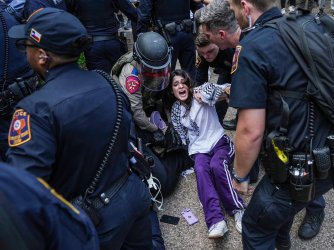
Texas tramples First Amendment rights with police crackdown of pro-Palestinian protests
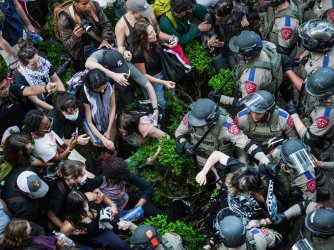
Here’s what students need to know about protesting on campus right now
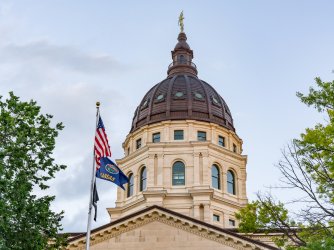
Kansas takes a stand for intellectual freedom
